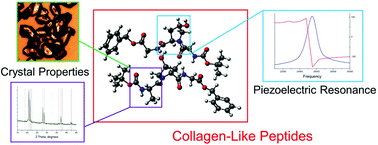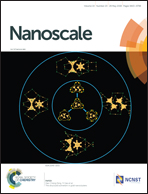Deconstructing collagen piezoelectricity using alanine-hydroxyproline-glycine building blocks
Abstract
Collagen piezoelectricity has been the focus of a large number of experimental and theoretical studies for over fifty years. Less is known about the piezoelectric properties of its building blocks, in particular but not limited to, proline and hydroxyproline. Spurred by the recent upsurge of interest in piezoelectricity in organic crystals including our own report of unprecedentedly high piezoelectricity in amino acid glycine, we predict and measure the piezoelectric properties of collagen subcomponents in single crystalline forms and the collagen-like alanine-hydroxyproline-glycine trimer peptide. We map the modulation of piezoelectric charge constants in collagen building blocks as the crystal symmetry is lowered and the molecule size increases, finding strong evidence for amino acid-level barcoding of collagen piezoelectricity that can in turn be tuned using very simple chemistry. The simple addition of an –OH group can increase piezoelectric constants by up to two orders of magnitude (d25 = 25 ± 5 pC N−1) as measured in Y-cut hydroxyproline crystals. The value is similar to that obtained from thermoelectrically poled commercial polyvinylidene di fluoride (PVDF) films. Overall, our findings support a simple block by block approach in which first principles calculations can guide the understanding and re-engineering of piezoelectric biomolecules.

- This article is part of the themed collection: #RSCPoster Conference


 Please wait while we load your content...
Please wait while we load your content...